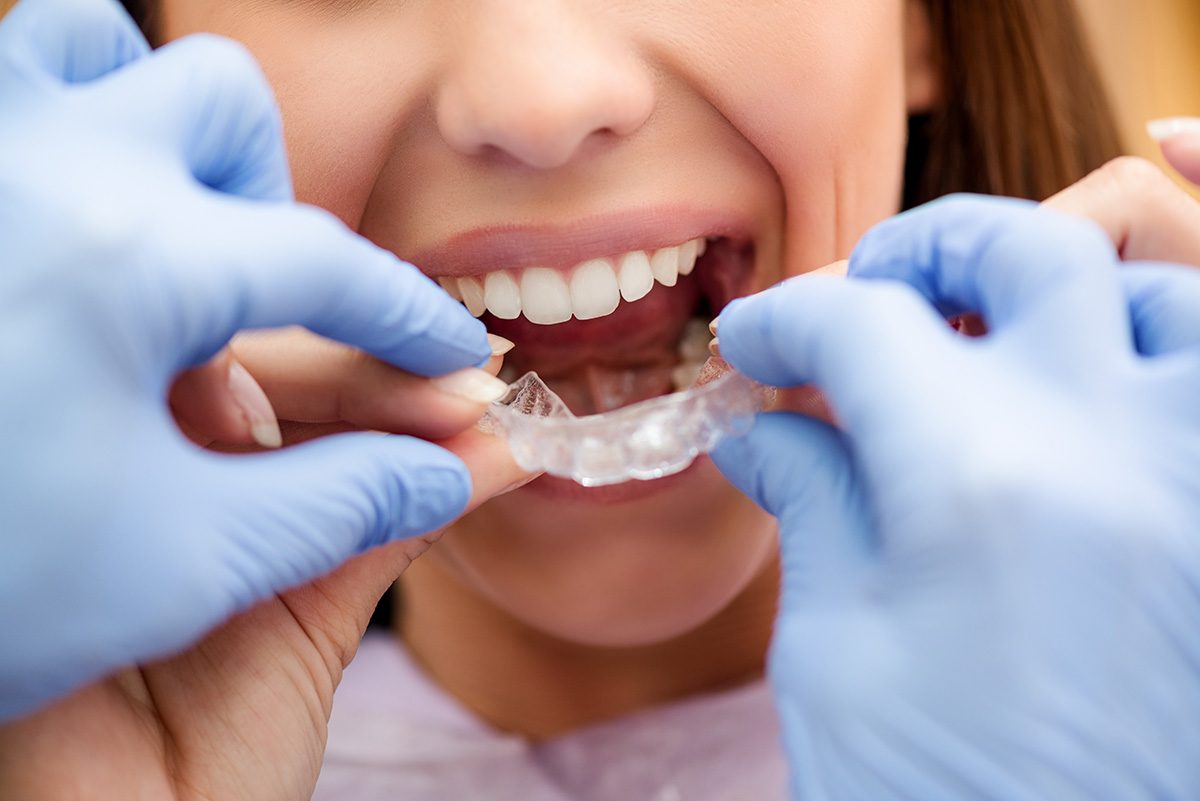Legacy Orthodontics for Dummies
Legacy Orthodontics for Dummies
Blog Article
Examine This Report on Legacy Orthodontics
Table of ContentsLegacy Orthodontics - QuestionsThe Best Strategy To Use For Legacy OrthodonticsWhat Does Legacy Orthodontics Do?The Basic Principles Of Legacy Orthodontics The 7-Minute Rule for Legacy Orthodontics
At Advanced Orthodontics, we offer patients with a holistic therapy experience. Additionally, we provide adjustable therapy timetables, versatile repayment alternatives and a fun, pleasurable experience. clear braces. Telephone call ( 480) 357-4900 today to learn more and schedule a visit.An orthodontist is a dentist educated to identify, stop, and treat teeth and jaw abnormalities. They correct existing conditions and are trained to determine problems that may develop in the future. Orthodontists collaborate with people of any ages, from kids to adults. People typically associate an ideal smile with health.
Malocclusion, or misaligned teeth, can cause dental issues, consisting of dental cavity, periodontal disease, and challenging or painful eating. Not everyone is birthed with straight teeth. If you have a negative bite or large rooms in between your teeth, you might intend to seek advice from a dental practitioner concentrating on orthodontic treatment.
The Greatest Guide To Legacy Orthodontics
( Picture Credit Scores: DigitalVision/Getty Images) Orthodontists use fixed and detachable dental devices, like braces, retainers, and bands, to alter the setting of teeth in your mouth. Orthodontic therapy is for oral abnormalities, consisting of: Crooked teethBite issues, like an overbite or an underbiteCrowded teeth or teeth that are also much apartJaw misalignmentThe objective of orthodontic therapy is to improve your bite.
While you may think of orthodontists as primarily for youngsters or young adults who require braces, they can deal with oral issues at any age. Orthodontists go to college, oral school, and orthodontic college.
, however not all dental practitioners are orthodontists. They concentrate on 2 locations: Exactly how to properly and safely move teeth Exactly how to effectively assist growth in the teeth, jaw, and faceOnce an orthodontist has actually finished training, they have the choice to come to be board accredited.
The 7-Minute Rule for Legacy Orthodontics
Imbalance, or malocclusion, is the most typical reason people see an orthodontist. It is hereditary and is the outcome of size distinctions between the top and lower jaw or between the jaw and teeth. Malocclusion leads to tooth congestion, an irregular jaw, or irregular bite patterns. Malocclusion is generally treated with: Your orthodontist connects steel, ceramic, or plastic square bonds to your teeth.
If you have only minor malocclusion, you might be able to make use of clear dental braces, called aligners, instead of conventional braces (https://www.tumblr.com/legacyortho/763052484489052160/the-goal-at-legacy-orthodontics-is-to-create-a?source=share). Some individuals require a headgear to assist move teeth right into line with pressure from outside the mouth. After dental braces or aligners, you'll need to use a retainer. A retainer is a customized device that maintains your teeth in position.
They're frequently used on youngsters. They can produce extra room in the mouth without needing to pull teeth. If you have a significant underbite or overbite, you may require orthognathic surgery (additionally called orthodontic surgical treatment) to extend or shorten your jaw. Orthodontists make use of cables, surgical screws, or plates to support your jaw bone.
You might need to see an orthodontist if you have: Crowding or not adequate area for every one of your teethOverbite, when your upper teeth come by your base teethUnderbite, when your bottom teeth are as Our site well much forwardSpacing or issues with gapsCrossbite, which is when your upper teeth fit behind your bottom teeth when your mouth is closedOpen bite or an upright space in between your front base and top teethMisplaced midline, when the facility of your bottom and upper teeth don't line up Correcting a dental malocclusion can: Make biting, eating, and talking easierImprove the proportion of our face and your overall appearanceEase pain from temporomandibular joint problemsSeparate your teeth and make them easier to clean up, aiding avoid dental caries or dental caries It's frequently a dental professional who first notifications misaligned teeth throughout a regular exam.
The Best Guide To Legacy Orthodontics

During your very first orthodontic assessment, you'll likely have: A dental examPhotos taken of your face and smileDental X-raysPanoramic (360 degree) X-rays of your face and headImpressions to produce molds of your teethThese examinations will help your orthodontist know exactly how to wage your treatment. clear braces. An orthodontist is a dental professional that's had training to treat your teeth and jaw
Orthodontists might carry out surgery, exams,X-rays,and more to aid you acquire a more comfy, healthier smile. An orthodontist is concentrated on your bite, so something like a damaged tooth would be managed by a dental professional. Orthodontists are dental professionals however not all dental practitioners are orthodontists. Orthodontists are concentrated on your bite, or the way your teeth fit together, and the straightness of your teeth.
Ever questioned just how celebs constantly appear to have perfectly straightened teeth? The solution frequently depends on the competent hands of an orthodontist. But just what does an orthodontist do? Orthodontists are dental specialists that concentrate on dealing with abnormalities in the teeth and jaws. Their competence surpasses just creating a lovely smile; it extends to enhancing your total oral wellness and feature.
An Unbiased View of Legacy Orthodontics

While braces are one of the most commonly recognized orthodontic treatment, orthodontists have a varied toolkit at their disposal. The specific technique chosen depends upon the severity of the case, the patient's age, and specific preferences. These reliable braces use a system of brackets bonded to the teeth and connected by wires.
Clear aligners, like Invisalign, are a popular choice for patients looking for an extra very discreet therapy alternative. These removable trays are custom-made to gradually move the teeth's setting. Headwear may be used in combination with braces or aligners to use added targeted forces, specifically for correcting jaw inconsistencies. In cases of narrow jaws, palatal expanders can be used to produce area for appropriate tooth placement.
Report this page